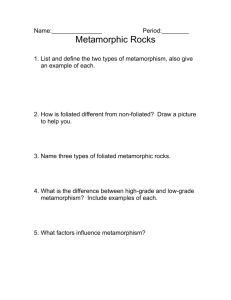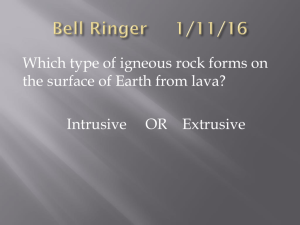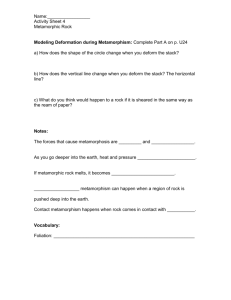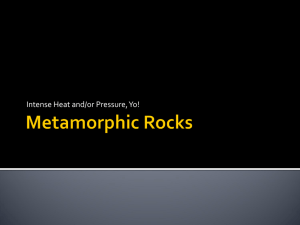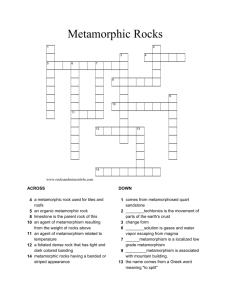Metamorphic Rocks - Kelly High School
advertisement
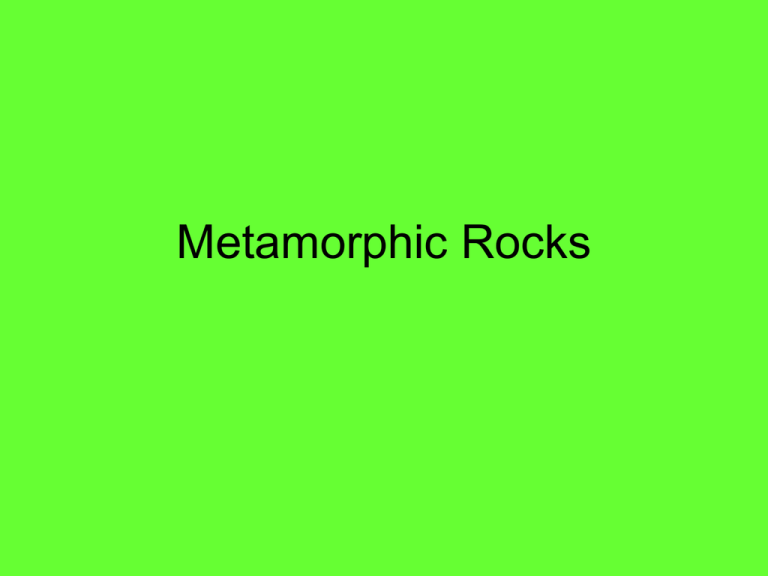
Metamorphic Rocks Metamorphic Rocks • Form when an existing rock, or parent rock, undergoes intense pressure or are exposed to high temperature, they become metamorphic rocks. Metamorphic means (“Change Form”) . Parent Rock • Look at the Picture on page 133… – Which image shows the parent rock? – How does image #2 look different from image #1? • • Look at the picture from page 135 of your textbook. This shows shells being compacted into limestone, which is further compacted into marble. On the three pictures (shells, limestone, and marble), which one represents: 1. Sediment? 2. Metamorphic Rock? 3. Sedimentary Rock? Two Types of Metamorphosis • Local Metamorphosis- takes place over a small, local area • Regional Metamorphosis- takes place over a large, regional area Local Metamorphism • Can occur in two different ways: 1. Contact- Rock located near molten rock (magma) changes form due to the heat (rock is cooked) 2. Deformational- Rock located near the center of an earthquake (fault line) changes form due to the pressure Contact Vs. Deformational • Think about whether the picture shows contact or deformational local metamorphism. Regional Metamorphism • Occurs in mountains as two plates of land crash into each other. Local Vs. Regional Metamorphism • For each of the following areas, make a guess as about whether they would be considered areas of local or regional metamorphism. • 1. A Newly Formed Mountain Range (100 square miles) • 2. A small area located next to a volcano • 3. All of the rock located under the United States • 4. Rocks located at the center of a recent Earthquake Foliation Foliation occurs when the minerals in a rock are compressed during Metamorphism and go from chunky crystals to parallel lines of minerals. Foliation Example • Look at the picture of granite and gneiss below (page 137 of your textbook). Gneiss shows foliation. • In which direction was the pressure applied? More Foliation Examples Metamorphic Rock Descriptions: Based on: • Parent Rock ex. sandstone • Mineral Content ex. shells, limestone • Texture ex. marble http://www.classzone.com/books/earth_science/terc/content/visualization s/es0607/es0607page01.cfm?chapter_no=visualization
